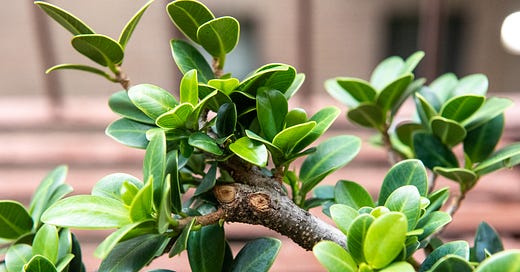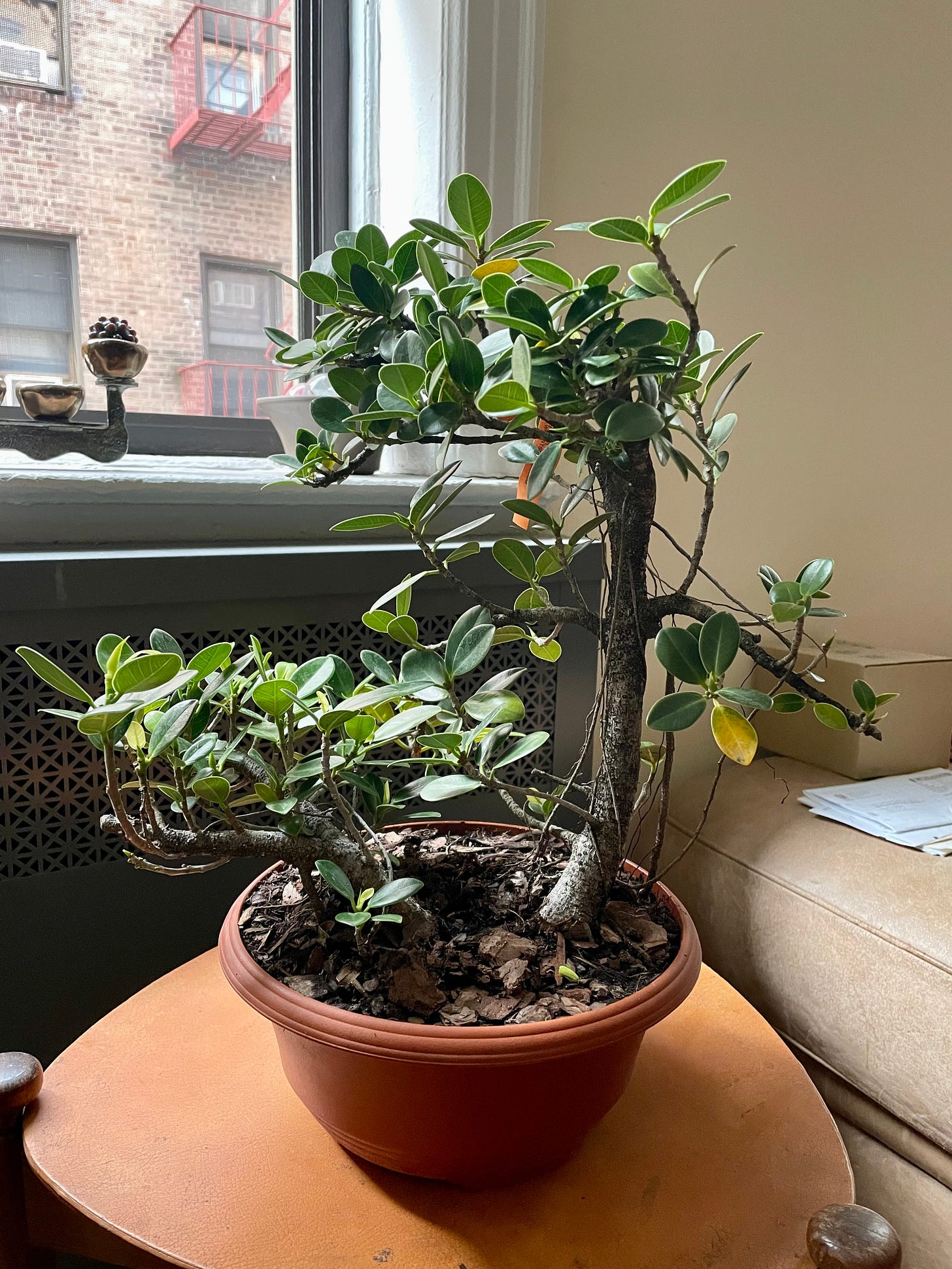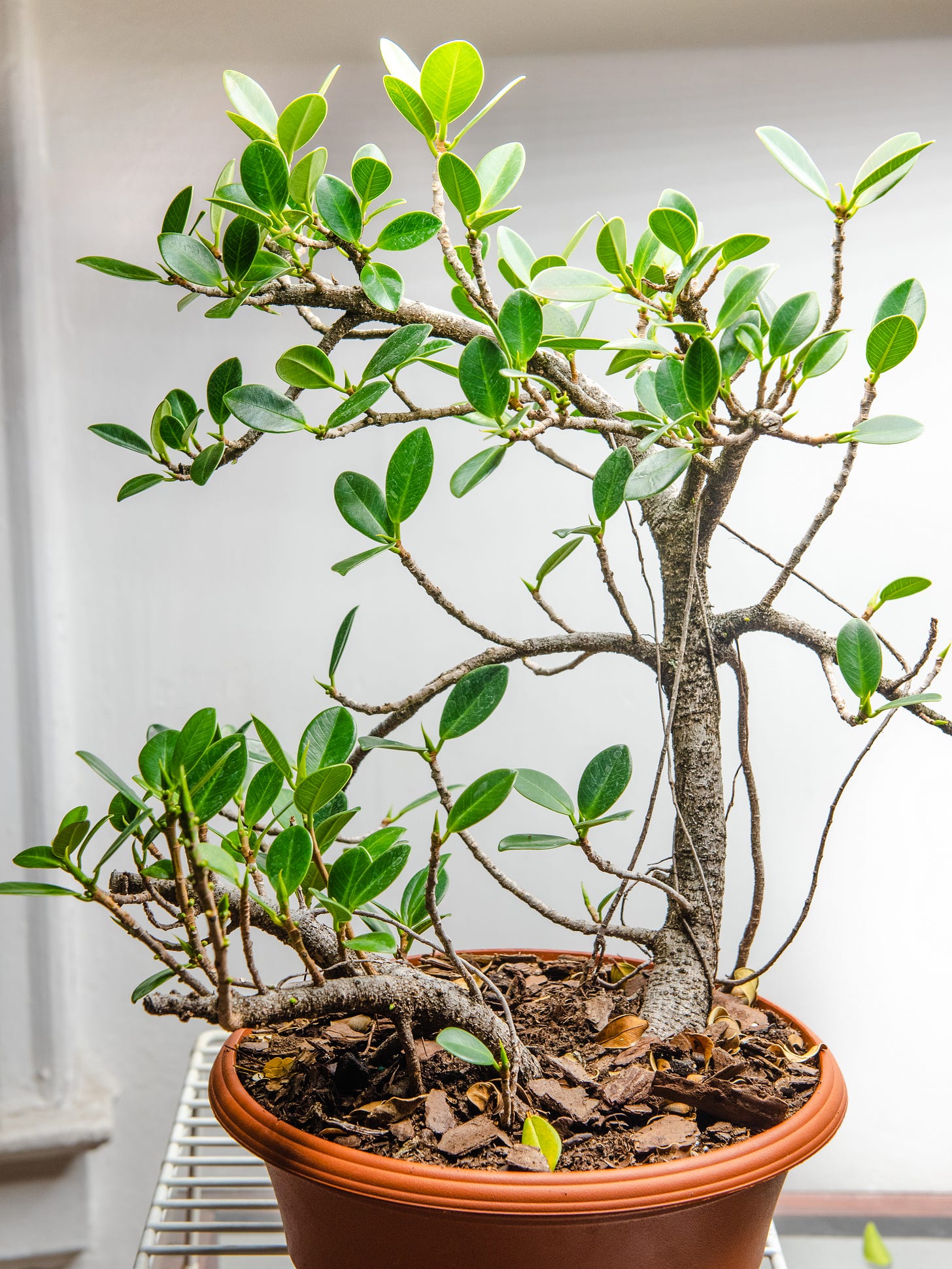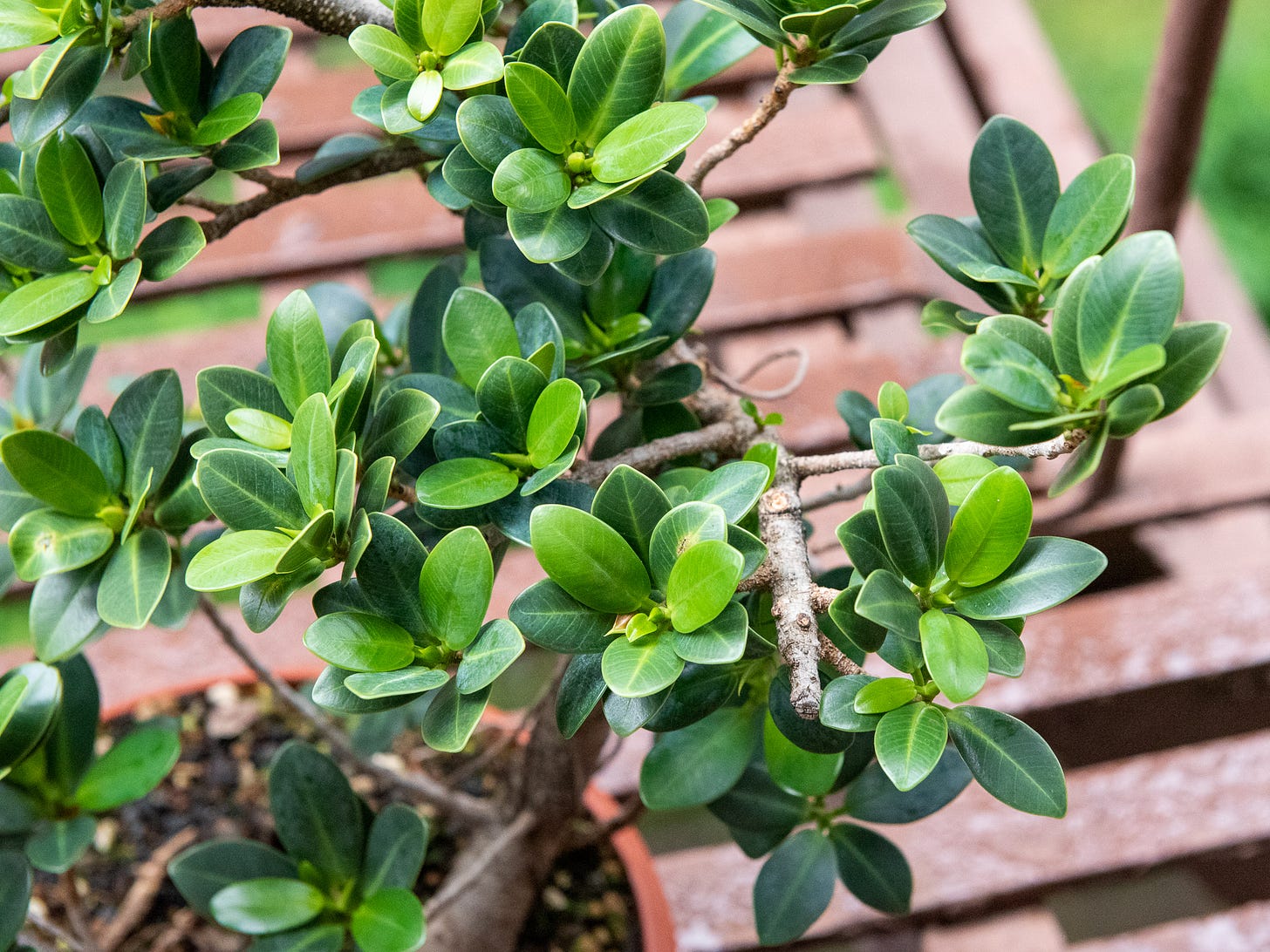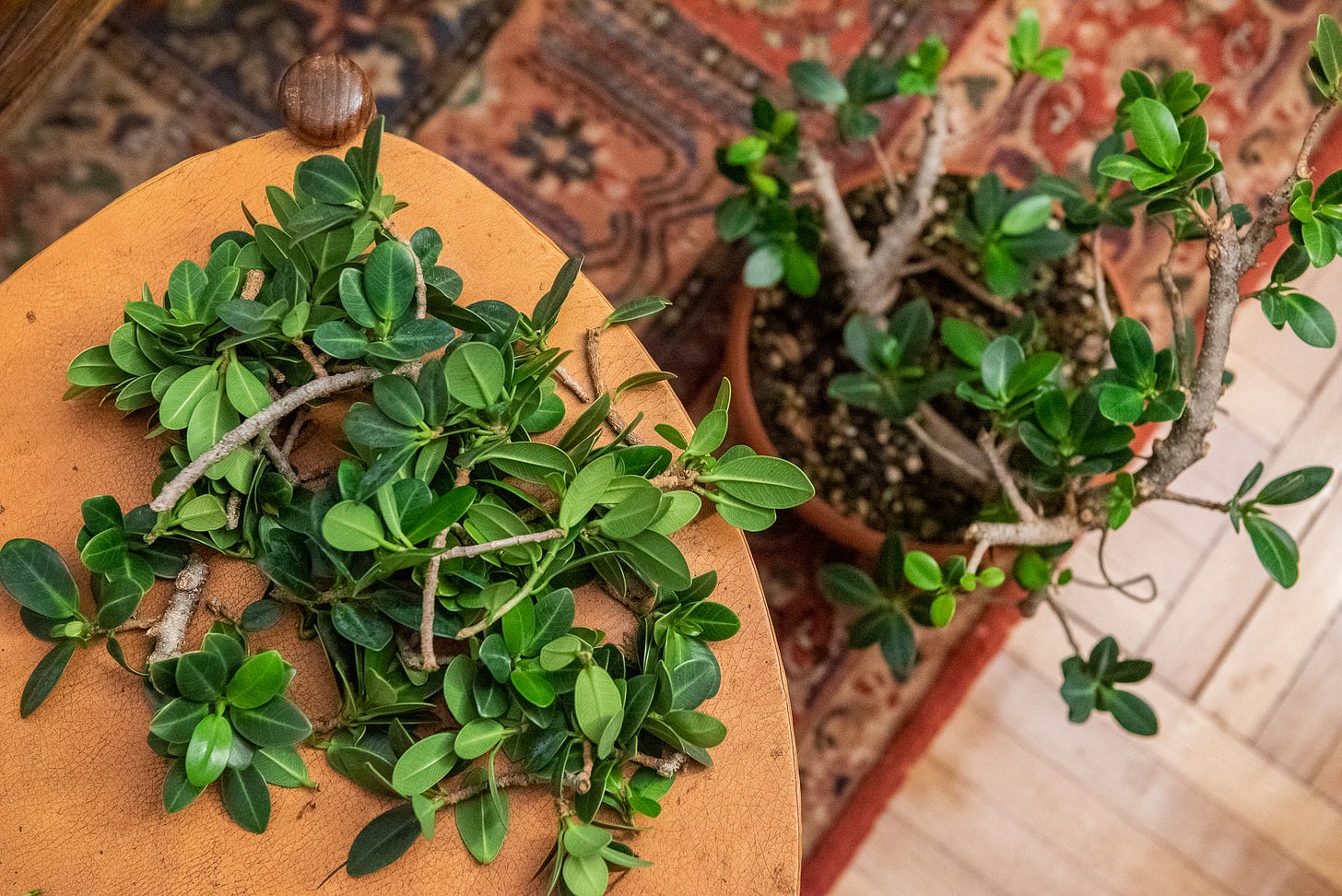When I got this ficus in December, I thought it’d become my winter project. I had just started growing trees indoors and was ready to one-up my skills. I was full of vim and vigor.
Here’s how the tree looked when it first arrived from Wigert’s Bonsai in Florida.
A month later, half of its leaves had yellowed and dropped.
After repotting the tree in January I let it grow wild to recover. A few snips here and there to correct bulging branches. Generous water and fertilizer. Last month I decided the tree had regained enough vigor to warrant a serious haircut.
‘Vigor’ is a horticultural measurement of the overall health of a tree and how likely it is to survive. There are technical definitions, but for our purposes you know it when you see it: robust trunks, ample branching, a thick canopy. Compare the bushy tree in the first photo with the spindly profiles in the second and third.
The declining health of a tree is a vicious cycle. The tree drops leaves to conserve water for its roots. The leaf drop reduces its feeding capacity. The remaining sugar stores aren’t enough to flush new leaves. Branches die and turn brittle and eventually break, exposing the weakened, starving tree to disease.
I know the feeling.
A tree’s journey to recovery is equally vicious. Growing new leaves will increase its energy in the long run, but the tree is limited by its current energy reserves. New roots won’t grow until the tree’s restored metabolic equilibrium. For many trees, the inertia is too much to overcome.
I suspect this tree is a rooted cutting taken off a stock plant. The two trunks join below the soil in a knot. A few branches have obviously been wired in the past; otherwise I don’t think much styling work had been done on this tree since it was planted into soil. Ditto for the roots. I only had one working arm at the time, so I wasn’t able to do much root pruning during the repot. Future Max can worry about that.
Much of this tree’s work the past few months has been directed below the soil. I can feel the tight mesh of roots all around the pot. Like the leaves, most of these roots will eventually be removed so I can fit this tree in a proper bonsai pot. Their growth is purely sacrificial. They exist only to strengthen the tree they’ll be severed from.
I waited patiently while this tree recovered its vigor. Sugar stores are high; the tree has energy to burn. So every time I thought I was finished pruning I challenged myself to find another branch to remove. The more leaves and branches I prune, the more the tree has to replace in spots that are more favorable to bonsai designs.
I had hoped this haircut would point the way towards some styling options. The profile is cleaner and less top heavy, but to be honest…I have no clue what to do with this. I think I need to let the tree’s new growth suggest some ideas.
A little dispiriting, I’ll admit. I was looking forward to doing something with this tree besides passively watch it grow. All I can do now is lay on the fertilizer and wait for new growth.
There’s a passage in The Bell Jar about a fig tree that often gets posted to inspirational quote websites. Narrator and protagonist Esther Greenwood imagines her life as the branching trunk of a fig tree heavy with fruit, each tantalizing fig a possible future. “One fig was a husband and a happy home and children,” Plath writes as Greenwood. “And another fig was a famous poet and another fig was a brilliant professor.”
Riddled with adolescent anxiety, Greenwood is paralyzed. “I saw myself sitting in the crotch of this fig tree, starving to death, just because I couldn't make up my mind which of the figs I would choose. I wanted each and every one of them, but choosing one meant losing all the rest, and, as I sat there, unable to decide, the figs began to wrinkle and go black, and, one by one, they plopped to the ground at my feet.”
Same, Esther.
Greenwood’s indecision doesn’t last forever. She has a meal in real life, with a real human suitor, and with a full belly she reconsiders the figs. Just a few pages later, Greenwood is, in the best of ways, back on her bullshit. “The last thing I wanted was infinite security and to be the place an arrow shoots off from.”
Now to let my ficus recover again. I’ll keep an eye on the new growth and remove any buds that form in inconvenient places. The waiting game continues. Recovery is miserably slow until you look back and see where you started, off in the distance.
Tree reading
The New Yorker profiled an artist who uses bonsai in his sculptures. Read that if you want, but the real treat is what these bonsai people think about it, and boy do they have thoughts! [Bonsai Nut]
The world needs new botanists! So why are botany programs disappearing from UK universities? [The Conversation]

